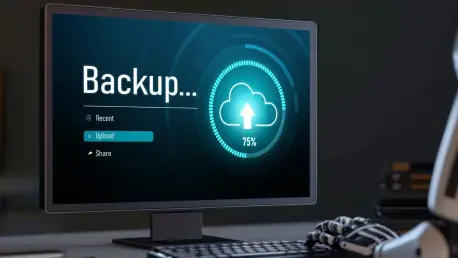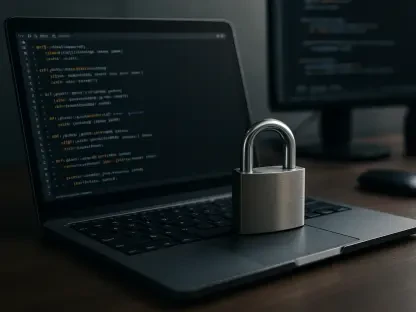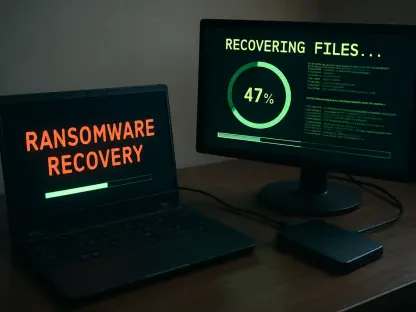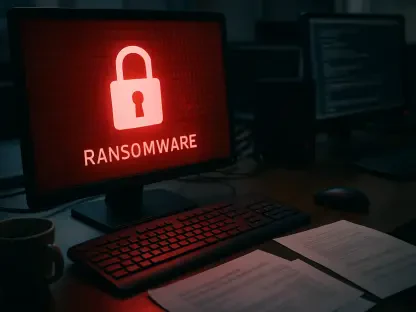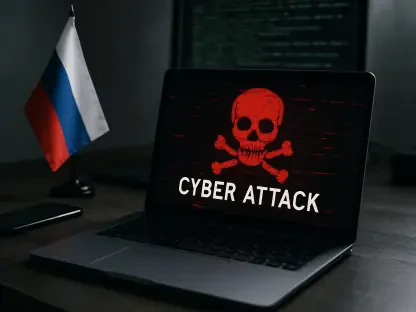In an era where data is both invaluable and vulnerable, the security of backup software is pivotal. Recent revelations highlight just how susceptible backup solutions can be, particularly when they aren’t updated promptly. Recent patches released by Veeam—a dominant player in the backup software market—have brought to light the ever-present threats lingering in the cyber landscape. Notably, the patch issued for addressing CVE-2025-23121, a critical remote code execution vulnerability, underscores the potential risks lurking for existing users of the software. This flaw allows an authenticated user to execute unauthorized code on a backup server, posing considerable risks to data integrity and system security. Earlier, a different vulnerability labeled CVE-2025-23120, perhaps inadequately addressed, necessitated this subsequent update. Such recurring vulnerabilities further emphasize the critical role of cybersecurity vigilance, especially for a company boasting over 550,000 global users. It highlights the essential balance between enhanced security protocols and operational efficiency, a balance that is ever more precarious in our digital age.
Evolving Cyber Threat Landscape
Backup software, historically viewed as a mere operational tool, is now a frontline defense against data breaches and ransomware attacks. However, the tendency of malicious entities to exploit outdated software versions remains a formidable challenge. This reality became glaringly evident with the revelation that a significant number of incidents last year involved Veeam’s software vulnerabilities. Rapid7’s analysis indicated that 20% of their incident responses were linked to exploitable gaps in Veeam, highlighting the persistent risks faced by customers. Such statistics underline the vulnerability of backup solutions to remote attacks, particularly when patches aren’t applied diligently. The gravity of these vulnerabilities is further magnified by the potential for severe consequences, such as unauthorized data access or system downtime. It highlights the necessity for organizations to adopt proactive security measures and regularly update software to protect their data assets. With cyber threats becoming increasingly sophisticated, the importance of maintaining a robust security posture cannot be overstated.
Organizations are urged to remain alert and responsive, diligently applying patches as they arise to counteract potential threats swiftly. As illustrated in Veeam’s recent patch crisis, cybersecurity is no passive exercise. It necessitates continuous monitoring and timely interventions to thwart malicious activities. The persistent exploitation of known vulnerabilities by cyber adversaries demands that organizations prioritize their security strategies and actively implement measures to safeguard sensitive information. It is imperative to view backup software as an integral component of an organization’s overall security infrastructure, rather than an isolated piece of technology. By strengthening defenses against remote attacks and adopting a proactive approach to security, organizations can mitigate potential risks and protect their digital assets from compromise.
Best Practices for Backup Security
Despite the evident risks, a concerning number of enterprises continue practices that heighten their vulnerability to cyber threats, such as using domain-joined backup servers. These configurations, often adopted for sheer convenience and efficiency, can inadvertently expose critical systems to attacks, jeopardizing sensitive data. Given the escalating sophistication of cyber threats, such practices should be approached with caution. The pursuit of operational efficiency must not come at the expense of robust security measures. Implementing a strong access control protocol, employing encryption, and isolating backup environments from other critical systems are essential steps to enhance the security posture. Organizations must strike a balance between convenience and protecting sensitive data by adopting security-centric configurations and employing rigorous testing procedures. By establishing a culture of cybersecurity awareness and emphasizing the importance of secure backup practices, organizations can better protect themselves from potential threats and foster a stronger defense against evolving cyber risks.
Equally important is the need for regular software updates to combat potential vulnerabilities effectively. Any hesitation or delay can provide malicious actors the opportunity to exploit vulnerable systems, emphasizing the critical nature of timely updates. As Veeam’s recent patch demonstrates, blacklisting dangerous deserialization gadgets as a strategy may not be fully effective, suggesting the need for more comprehensive security measures. Incorporating multi-layered security approaches that include real-time monitoring, threat detection, and intrusion prevention can significantly enhance the overall resilience of backup systems. Organizations should consider adopting advanced threat intelligence solutions to stay ahead of emerging threats and gain insights into potential vulnerabilities. By proactively addressing security challenges and implementing structured protocols, organizations can bolster their defenses against remote attacks and ensure the integrity and availability of critical data.
Future Considerations for Enhanced Protection
In today’s world, where data is both crucial and at risk, securing backup software is more important than ever. Recent discoveries highlight how vulnerable backup solutions can be, especially if not promptly updated. Veeam, a leading name in the backup software industry, has recently released patches that reveal ongoing cyber threats. One significant update addresses CVE-2025-23121, a critical vulnerability that allows a remote code execution attack. This flaw permits an authenticated user to run unauthorized code on a backup server, threatening data integrity and system security. An earlier vulnerability, CVE-2025-23120, perhaps not fully resolved, led to this crucial update. These repeated vulnerabilities underscore the necessity of heightened cybersecurity vigilance, especially for companies like Veeam, which serves over 550,000 users globally. This situation highlights the essential balance companies must maintain between strong security measures and operational effectiveness—a balance that’s increasingly tenuous in our digital era.
